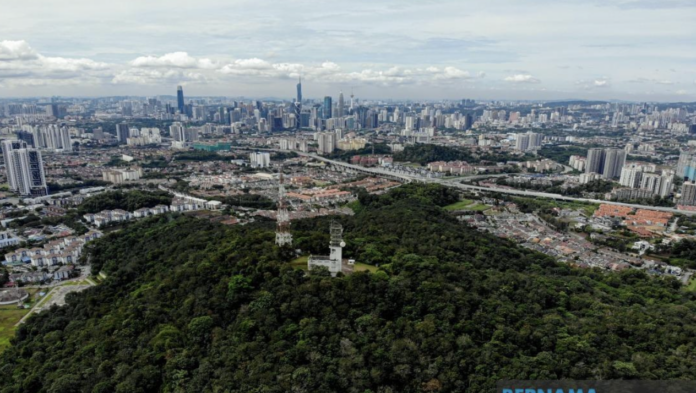KUALA LUMPUR, Aug 22 – Any effort to designate Bukit Dinding, located in Wangsa Maju here, as a geosite should take into account technical and scientific factors to support the proposal.
Minister of Natural Resources and Environmental Sustainability Nik Nazmi Nik Ahmad said it is essential to ensure that the area possesses significant geological heritage, scientific value, and unique characteristics.
“Besides designating geosites, various methods can be employed to protect the geological heritage of an area. Among them is recording the best rock outcrop locations that have been identified as reference and learning sites,” he said in a statement to Bernama.
Bernama previously reported that Bukit Dinding is the oldest rock formation in Kuala Lumpur, consisting of Dinding Schist, estimated to be around 479 million years old, surpassing the age of limestone formations and Hawthornden Schist.
Assoc Prof Dr Mustafa Kamal Abdul Aziz, who has researched Dinding Schist, suggested that Bukit Dinding be designated as a geosite to conserve the remaining ecological treasures in the green area.
Commenting further, Nik Nazmi, who is Setiawangsa MP, said that according to the Geological Map of Peninsular Malaysia published by the Department of Mineral and Geoscience in 2014, the Dinding Schist or Hawthornden Schist formation not only exists in Bukit Dinding but also covers surrounding areas, including Desa Tun Hussein Onn-Setiawangsa-Bukit Melawati-Ampang Jaya.
“This formation consists of quartz-mica schist, carbonaceous schist, and phyllite, dating back to the Lower Palaeozoic (550-420 million years ago). Rock outcrops of this formation can be found in the mentioned areas and are not unique to Bukit Dinding alone,” he said.
Nik Nazmi informed that the ministry is currently working on gazetting Bukit Dinding as a permanent forest reserve under the National Forestry Act 1984 [Act 313] to ensure that the area remains a green zone and acts as a green lung for the surrounding areas.
















